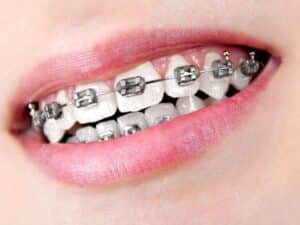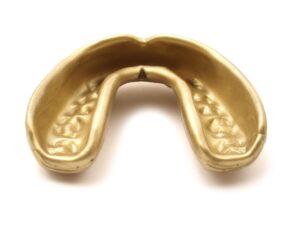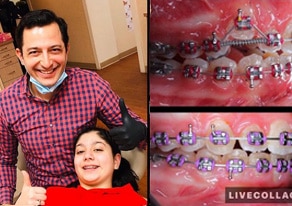Playing sports is exciting, but it comes with risks, especially for those wearing braces. Braces sports require extra precautions to avoid injuries and keep orthodontic treatment on track. Without protection, an accidental hit to the face can damage brackets, shift wires, or cause painful cuts inside the mouth.
Many athletes assume they can play as usual without making adjustments for braces. However, the wrong approach can lead to emergency orthodontic visits and delayed treatment progress. The good news is that with the right protection, athletes with braces can still participate confidently. Understanding the risks and using proper gear can help prevent unnecessary setbacks.
Risks of Playing Sports with Braces

Direct Impact Injuries
Sports that involve physical contact or fast-moving objects increase the chance of impact injuries. A ball, elbow, or fall can hit the mouth unexpectedly, leading to painful cuts and potential damage to braces. Even a minor hit can loosen a bracket or bend a wire, requiring orthodontic repairs.
Bracket and Wire Damage
Braces are designed to shift teeth gradually, but a sudden force can disrupt that process. If a bracket breaks or a wire bends, the pressure applied to teeth changes, which can slow down or reverse progress. Fixing these issues requires an extra orthodontic appointment and may extend treatment time.
Soft Tissue Injuries
Braces have small metal parts that can rub against the lips, cheeks, and gums. When combined with the impact of sports, they can cause cuts, swelling, and discomfort. Without protection, these small injuries can make it difficult to eat, speak, or focus during games.
Delayed Treatment Progress
Any damage to braces can set treatment back by weeks or even months. A broken bracket or a misaligned wire means adjustments are needed, which can prolong the expected completion time. Keeping braces intact is essential to avoid unnecessary delays. Protecting your teeth while playing sports is possible with the right precautions.
Essential Gear for Protecting Your Braces in Sports
Playing sports with braces doesn’t have to be risky. The right protective gear helps prevent injuries and keeps orthodontic treatment on track. Some equipment is essential for all athletes with braces, while others are necessary for high-contact sports.
Mouthguards: Your Best Defense
Mouthguards are the most important piece of protective gear for anyone playing braces sports. They create a cushion between the braces and the inside of the mouth, reducing the risk of cuts, broken brackets, and bent wires. However, not all mouthguards are the same, and some work better with braces than others.
Types of Mouthguards:
- Boil-and-Bite Mouthguards – These are softened in hot water and molded to the teeth. They provide a snug fit, but they may not leave enough room for braces to shift teeth properly.
- Stock Mouthguards – These are pre-formed and inexpensive but often uncomfortable. They don’t provide a secure fit, making them less effective for braces wearers.
- Orthodontic Mouthguards – Designed specifically for braces sports, these mouthguards offer extra space to accommodate braces while providing strong protection. They allow teeth to move while keeping brackets and wires safe. Clear Ceramic Braces are another great option for athletes who want a less noticeable orthodontic treatment while still enjoying their favorite sports.
How to Choose the Right Mouthguard for Braces
- Look for a braces-friendly design that provides enough space for brackets and wires.
- Opt for a mouthguard made from medical-grade silicone for better comfort and protection.
- If playing high-contact sports, consider a custom-fitted mouthguard from a dentist or orthodontist.
Helmet and Face Guards for Contact Sports
Certain sports require additional protection beyond a mouthguard. A direct hit to the mouth can still cause damage, even with a mouthguard in place. For high-impact activities, helmets and face guards add an extra layer of defense.
Recommended Protection for Specific Sports:
- Football, Hockey, and Lacrosse – Helmets with full-face shields help prevent direct contact with braces.
- Basketball and Soccer – While helmets aren’t required, a properly fitted mouthguard is essential.
- Wrestling and Martial Arts – Face shields and orthodontic mouthguards provide the best protection against direct blows.
Wearing the right gear makes a significant difference in keeping braces safe while playing sports.
Tips for Playing Sports with Braces

Wearing the right gear is the first step in protecting braces during physical activities. However, there are additional precautions that can help reduce the risk of injuries and keep orthodontic treatment on track. By following these simple tips, athletes can continue enjoying braces sports without unnecessary setbacks.
Always Wear a Mouthguard
A mouthguard is non-negotiable for any sport that involves running, jumping, or physical contact. It protects not only braces but also teeth, gums, and the inside of the mouth. For the best protection, choose an orthodontic mouthguard designed to fit over braces without restricting movement.
Stay Hydrated
Dry mouth can make braces feel more uncomfortable, especially during long practices or games. Drinking water frequently helps keep the mouth moist and reduces irritation caused by brackets and wires rubbing against the lips and cheeks.
Use Orthodontic Wax for Extra Comfort
Even with a mouthguard, some braces wearers experience irritation from brackets pressing against the inside of the mouth. Applying orthodontic wax to sharp edges provides an extra layer of comfort and prevents small cuts or sores from forming.
Check Your Braces After Every Game or Practice
After any physical activity, take a moment to inspect braces for any signs of damage. Look for loose brackets, bent wires, or anything that feels out of place. Catching small issues early can help prevent bigger problems down the road.
Visit Your Orthodontist Regularly
Routine checkups are important for keeping braces in good condition, especially for athletes who play contact sports. If any damage occurs, an orthodontist can make quick adjustments to prevent delays in treatment.
By following these precautions, athletes can minimize the risks of braces sports and focus on performing their best.
What to Do If You Injure Your Braces During Sports
Even with the right precautions, accidents can still happen. A direct hit to the mouth or an unexpected fall can damage brackets, bend wires, or cause discomfort. Knowing how to handle an injury right away can prevent further complications and keep treatment on track.
Assess the Damage
The first step is to check for visible issues. Common problems include:
- Loose or Broken Brackets – Brackets that detach from the tooth or shift out of place.
- Bent or Poking Wires – Wires that stick out and irritate the cheeks or gums.
- Cuts or Sores – Soft tissue injuries from braces rubbing against the mouth.
If the injury involves severe pain, significant bleeding, or a knocked-out tooth, seek immediate dental care.
Apply Orthodontic Wax for Temporary Relief
For minor discomfort, orthodontic wax can help. Placing wax over a sharp or broken bracket reduces irritation until an orthodontist can fix the issue.
Rinse with Salt Water
If braces cause cuts or sores inside the mouth, rinsing with warm salt water helps reduce irritation and prevents infection.
Avoid Eating Hard or Sticky Foods
After an injury, eating hard or sticky foods can worsen the problem. Stick to soft foods until the braces are checked by a professional.
Contact Your Orthodontist
If a bracket is broken or a wire is bent, schedule an orthodontic appointment as soon as possible. Ignoring damage can slow down treatment progress and lead to further complications.
Taking quick action after an injury can prevent delays and keep braces functioning properly. Next, we’ll discuss which sports are the safest for braces wearers and which require extra protection.
Best Sports for Braces Wearers
Athletes with braces don’t have to sit on the sidelines. Most sports are still safe to play with the right precautions. However, some require more protection than others. Understanding which activities pose the lowest and highest risks can help braces wearers make informed decisions.
Low-Contact Sports
These activities pose little to no risk of direct impact to the face. They are the safest options for athletes with braces.
- Swimming
- Running
- Cycling
- Golf
- Track and field
Moderate-Contact Sports (With Proper Protection)
While these sports involve some physical contact, the risk of injury to braces can be minimized with a high-quality mouthguard.
- Tennis
- Baseball
- Softball
- Basketball
- Soccer
- Volleyball
High-Contact Sports (Mouthguard Required)
These sports have the highest risk of facial impact. Wearing an orthodontic mouthguard and, when necessary, a helmet or face guard is essential.
- Football
- Hockey
- Wrestling
- Lacrosse
- Martial arts
- Boxing
Athletes can still participate in high-contact sports as long as they use the right protective gear. Making safety a priority ensures braces stay intact while allowing full participation in sports.
Conclusion: Play Safe and Protect Your Smile
Braces shouldn’t stop athletes from enjoying their favorite sports, but extra precautions are necessary to prevent injuries and avoid delays in treatment. Braces sports require proper protection, including a high-quality mouthguard, regular braces checks, and awareness of potential risks.
Choosing the right protective gear is the best way to keep braces intact while staying active. A well-fitted orthodontic mouthguard, along with helmets and face guards for high-contact sports, can significantly reduce the chances of broken brackets or soft tissue injuries.
By following safety tips, checking braces after games, and visiting an orthodontist for any necessary adjustments, athletes can continue playing with confidence. Taking these simple steps ensures a smooth orthodontic journey while staying active in sports.
Protect Your Smile with Expert Orthodontic Care
Sports and braces can go hand in hand with the right protection and guidance. At Halabi Orthodontics, we understand the importance of keeping your smile safe while staying active. Our team is dedicated to providing advanced orthodontic care that ensures both function and aesthetics throughout your treatment.
Dr. Eli Halabi and his team are committed to delivering exceptional results using cutting-edge technology and a personalized approach. From the first consultation to the final adjustment, every step is designed for efficiency, comfort, and outstanding outcomes.
If you’re looking for expert orthodontic care that prioritizes both your smile and lifestyle, contact Halabi Orthodontics today. Schedule a consultation to explore your options and experience orthodontic care that goes beyond just straightening teeth.

 CURRENT PATIENT NUMBER
CURRENT PATIENT NUMBER

 What patients are saying
What patients are saying Your smile our passion
Your smile our passion News and Events
News and Events